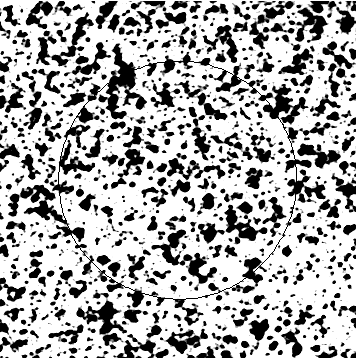(All information courtesy of the instrument teams.)
![]() Previous IAU Circulars
Previous IAU Circulars
TITLE: GCN/INTEGRAL NOTICE
NOTICE_DATE: Fri 30 Jul 04 02:12:40 UT
NOTICE_TYPE: INTEGRAL Wakeup
TRIGGER_NUM: 1888, Sub_Num: 0
GRB_RA: 238.2856d {+15h 53m 09s} (J2000),
238.3769d {+15h 53m 30s} (current),
237.2908d {+15h 49m 10s} (1950)
GRB_DEC: -56.4492d {-56d 26' 56"} (J2000),
-56.4626d {-56d 27' 44"} (current),
-56.3008d {-56d 18' 02"} (1950)
GRB_ERROR: 3.07 [arcmin, radius, statistical only]
GRB_INTEN: 9.74 [sigma]
GRB_TIME: 7942.70 SOD {02:12:22.70} UT
GRB_DATE: 13216 TJD; 212 DOY; 04/07/30
SC_RA: 229.00 [deg] (J2000)
SC_DEC: -59.19 [deg] (J2000)
SUN_POSTN: 129.67d {+08h 38m 40s} +18.45d {+18d 27' 18"}
SUN_DIST: 115.59 [deg]
MOON_POSTN: 285.64d {+19h 02m 34s} -27.32d {-27d 19' 26"}
MOON_DIST: 44.30 [deg]
GAL_COORDS: 326.13, -1.99 [deg] galactic lon,lat of the burst
ECL_COORDS: 249.15,-35.28 [deg] ecliptic lon,lat of the burst
COMMENTS: INTEGRAL GRB Coordinates.
TITLE: GCN/INTEGRAL NOTICE
NOTICE_DATE: Fri 30 Jul 04 03:57:51 UT
NOTICE_TYPE: INTEGRAL Offline
TRIGGER_NUM: 1888, Sub_Num: 1
GRB_RA: 238.3153d {+15h 53m 16s} (J2000),
238.4067d {+15h 53m 38s} (current),
237.3205d {+15h 49m 17s} (1950)
GRB_DEC: -56.4507d {-56d 27' 02"} (J2000),
-56.4641d {-56d 27' 50"} (current),
-56.3024d {-56d 18' 08"} (1950)
GRB_ERROR: 2.00 [arcmin, radius, statistical only]
GRB_INTEN: 9.74 [sigma]
GRB_TIME: 7942.70 SOD {02:12:22.70} UT
GRB_DATE: 13216 TJD; 212 DOY; 04/07/30
SC_RA: 229.00 [deg] (J2000)
SC_DEC: -59.19 [deg] (J2000)
SUN_POSTN: 129.67d {+08h 38m 40s} +18.45d {+18d 27' 18"}
SUN_DIST: 115.61 [deg]
MOON_POSTN: 285.64d {+19h 02m 34s} -27.32d {-27d 19' 26"}
MOON_DIST: 44.29 [deg]
GAL_COORDS: 326.14, -2.01 [deg] galactic lon,lat of the burst
ECL_COORDS: 249.17,-35.28 [deg] ecliptic lon,lat of the burst
COMMENTS: INTEGRAL GRB Coordinates.

R.A. 15h 53m 16s Dec. -56deg 27' 03''with an uncertainty of 2 arcmin (90% c.l. radius)